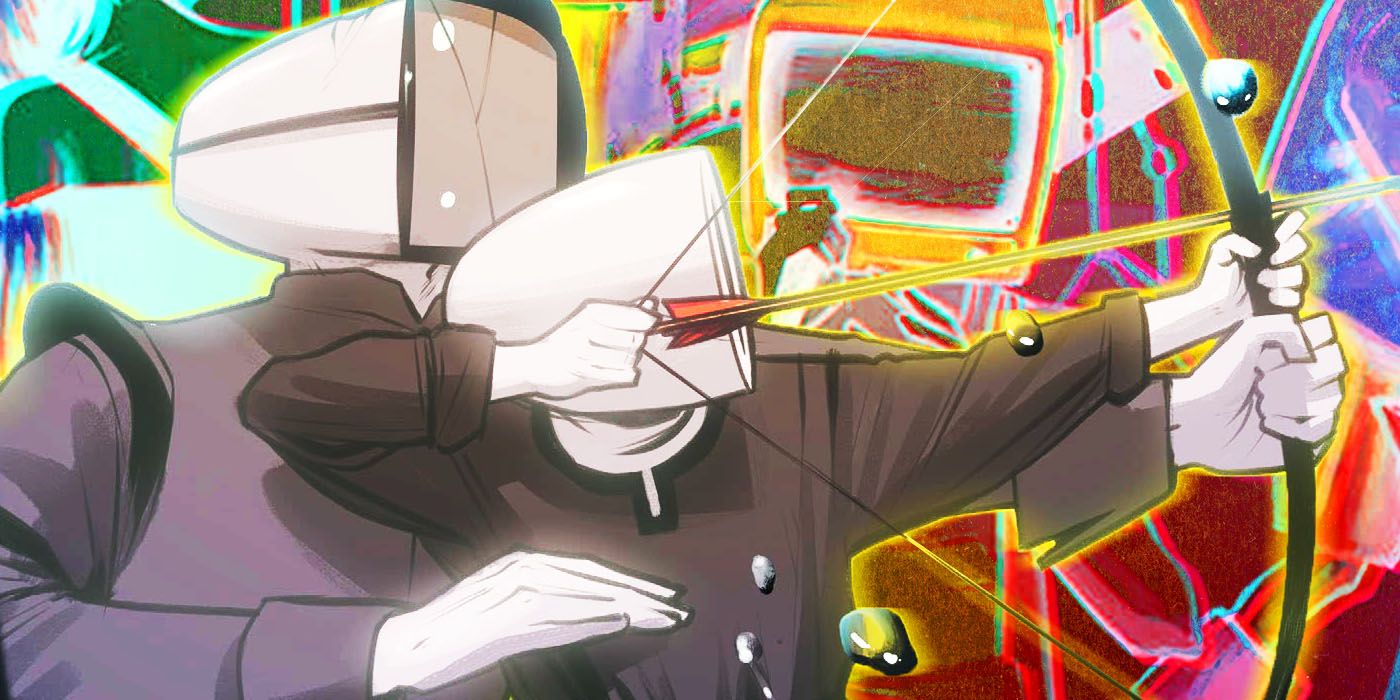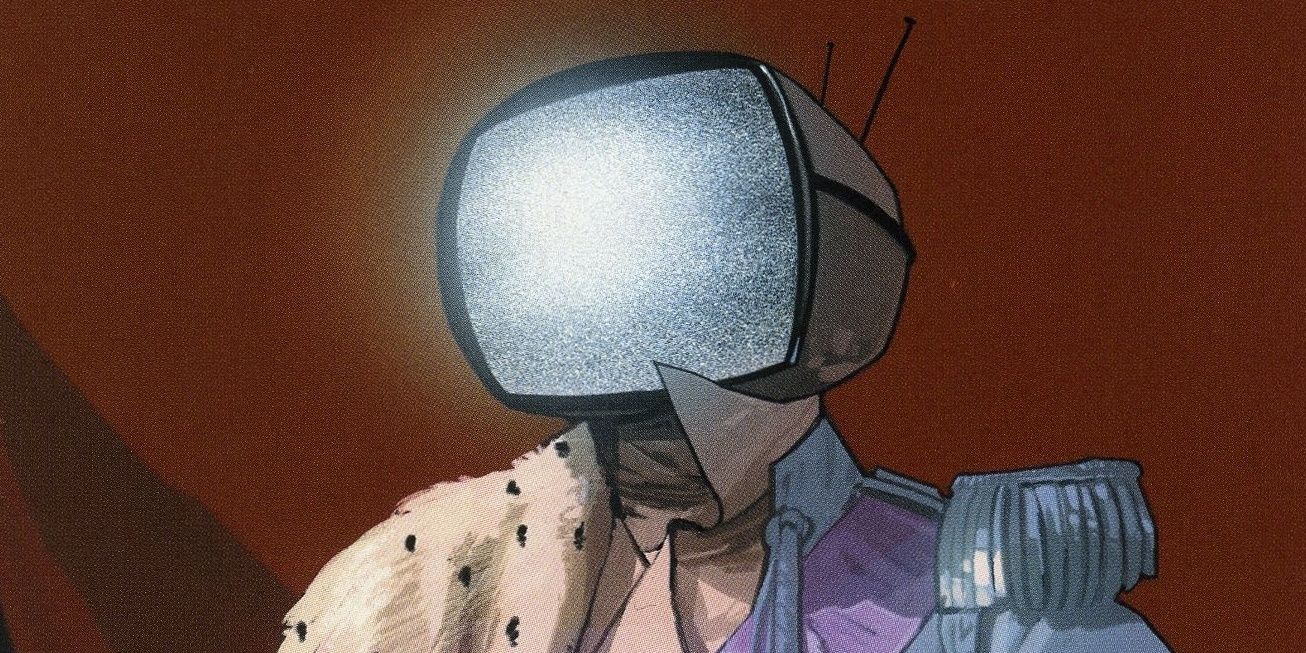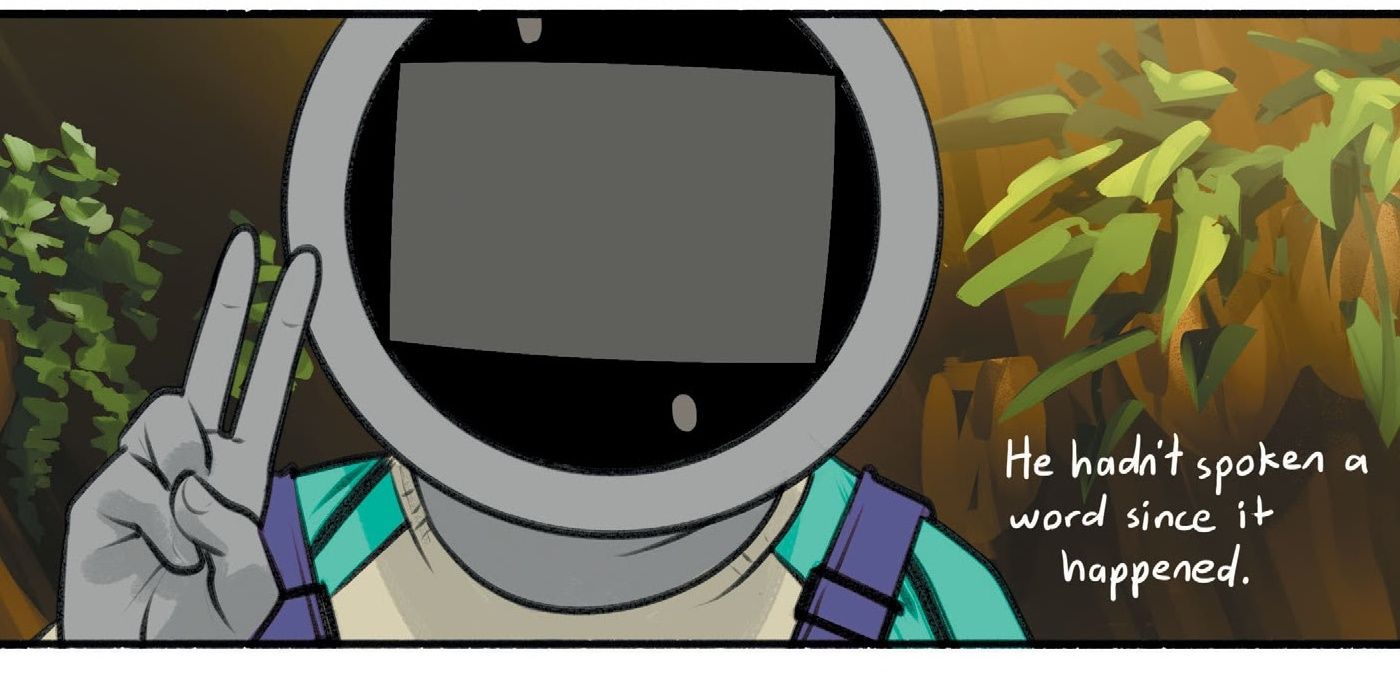WARNING: The following contains spoilers for Saga #56.
In issue 56 of Brian K. Vaughan and Fiona Staples' epic Saga, readers experienced the return of a King, mourning over his long-dead estranged son and plotting vengeance. This prince's son is now in the company of those who very nearly caused his father's death, being raised as one of their own. All throughout the kingdom, cries have gone out for vengeance against those who orchestrated the death of the prince.
This is all quite Shakespearean, with stakes high and margin for error low. The only issue with this storyline is that the royalty in question is a set of robots. These robots, in particular, are simply humans with expressionless televisions for heads. Images of documentaries, dramas and pornography flash on the screens of the robots to show their emotions before returning to a blank screen for dialogue. Even though the robots in Saga look somewhat ridiculous, this is done to mask the truly Shakespearean stakes of their stories.
This isn't necessarily a new concept. In fact, plays predating Shakespeare would use comic relief to tell humorous versions of serious stories. This is a practice that comic books often engage in. However, Saga's actions are different because this isn't a play within a play or a simple cutaway, but an entire race of characters with their own storyline and feelings. The story of Prince Robot and his family isn't so much inspired by Shakespeare. Rather, it resembles a play which itself is inspired by Shakespeare: Tom Stoppard's Rosencrantz and Guildenstern are Dead.
In this story, Rosencrantz and Guildenstern from the play Hamlet have a postmodern adventure happening in the same space as Hamlet. Likewise, Prince Robot, though for the most part tangentially related to the protagonists of Saga, serves as a protagonist of a full drama in its own right. The story structure is inspired by plays and Shakespearean storylines, but the story of the robots is where the true seriousness comes out.
The delineation between classes on the Robot Kingdom planetoid is based upon the arbitrary nature of one's birth. There are blurred relationships between duty and family. Trauma and the past rule. The storylines of the robots are heady and difficult. Even as the vast majority of Saga deviates quite on purpose from the standards of much contemporary science fiction, the robots represent as close to a heraldic science fiction piece as can be.
This all despite the fact that the king of the robots is recognizable because he is a fat, gray man with a plasma screen for a head. Even within the universe of Saga, the ridiculous character designs serve as a break from the seriousness of the rest of the story. This gives the readers – and possibly the authors – a respite from the darkness of the other storylines. As one reads Saga and realizes that its story has all the beats of a tragedy, this makes even greater sense because of the need for something to break up the dour atmosphere.
As the story continues, the span between the goofy appearance of these robots and their serious storylines becomes wider. In fact, this may allude to their ultimate goal. As Vaughan's characters break through the preconceived notions that readers have of the royal story, its power strikes with new relevance. Much like in Art Spiegelman's Maus, the robots' silly, cartoonish appearance allows for them to be seen as not characters in the same familiar drama. Rather, they are independent actors telling a new, unique, and important story.
Regardless of the intention, the robots stand as one of the greatest and most unique parts of Saga. As the story of Saga continues through the vengeance of Prince Robot's father, so too will the unique take on this Shakespearean storyline. Even more importantly, the robots of Saga will continue to teach fans to expect twists from even the least likely of places.



